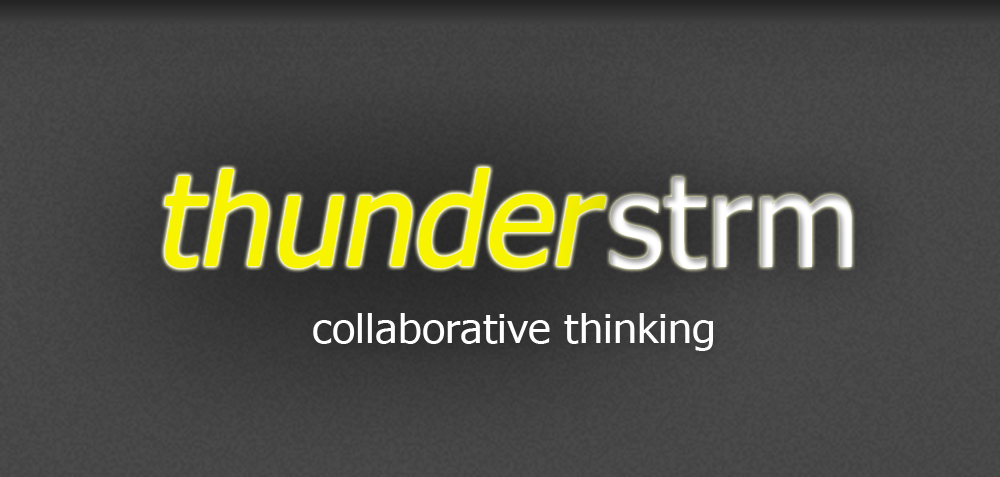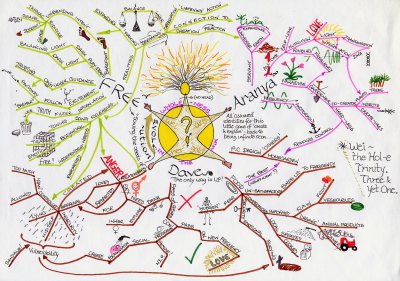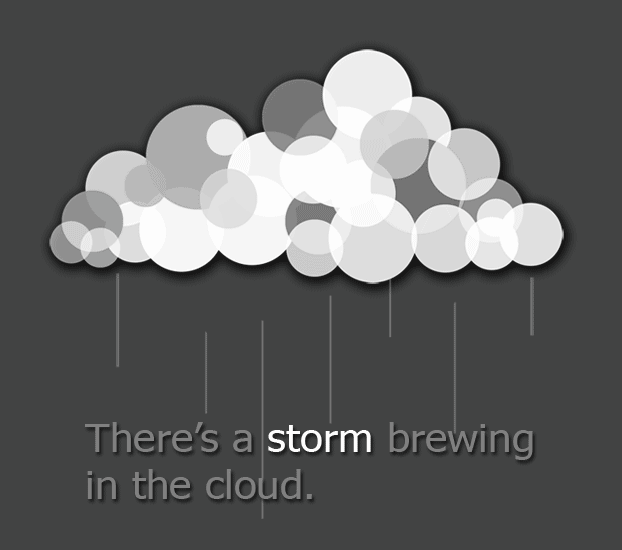
This page is meant to address common questions and comments expressed after watching the entry video for ThunderSTRM (pronounced "thunderstorm").
1) What do you mean by “the next revolution in human thinking” in the video?
2) How would that happen?
3) What are some possible applications of this technology?
4) Is this an open system? Shouldn't this technology be non-proprietary?
5) How would privacy work? What's to keep others from stealing my content?
6) This is too ambitious.
7) What you are trying to do is very complex.
8) Are you worried about the competitors?
9) This is going to take a long time.
10) Why did you enter the Teen Tycoon contest?
11) This sounds a lot like Twitter.
12) What about low-quality posts, trolls, and other junk that comes with open access and anonymity?
13) Users can vote individual posts up and down?
14) So, is it more like reddit?
15) What do you mean by ‘karma’?
16) Is there any business potential for a free service like this?
17) Why did you enter such a valuable idea in a public contest?
1) What do you mean by “the next revolution in human thinking” in the video?
Throughout history, revolutions in human thinking have been enabled by the innovations of new information technologies.
- c. 3000 BC: The Mesopotamians invent the first form of writing.
- c. 100 AD: Paper is invented in China.
- 1450: Johannes Gutenberg invents the printing press, which many credit as the catalyst for the Enlightenment.
- 1835: Samuel Morse develops an electric telegraph; this allowed messages to be sent over long distances by wire near the speed of light.
- 1876: Alexander Graham Bell is awarded the first patent for a telephone, to transmit voice over electrical wire.
- 1970s: With the development of the microprocessor, humanity has entered the age of electronics, enabling personal computing and word processing.
2) How would that happen?
ThunderSTRM is a free online tool for collaborative brainstorming, focused to be as easy as possible to use and work alongside others. Its flexible design allows for an untold number of applications.

(A hand-drawn example of a mindmap)
3) What are some possible applications of this technology?
ThunderSTRM is designed to be flexible enough for countless application: a platform for an active flow of creativity that is not hindered in any way, yet still remains organized with little effort.
For students, imagine a tool for non-linear note taking while in class, while also allowing others to join in at the same time. Or for joint problem solving, it will only be a matter of sharing a mindmap to make others immediately understand your current progress and roadblocks.
For project planners, and for groups trying to plan an event together, ThunderSTRM makes it easy to keep track of multiple considerations concurrently. The same could be said about a conversation covering multiple topics, at once. No longer would one have to say “To respond to your first point... your second... to your third...” and so on. These examples reveal the fundamental advantage of this web format compared to traditional linear structures: all-at-once-processing (parallel) instead of one-at-a-time (sequential, which also requires considerations of order).
ThunderSTRM could also easily export data into an outline format, making planning any project — for example, an essay — much easier than manual organization.
4) Is this an open system? Shouldn't this technology be non-proprietary?
Yes! Collaboration is fundamental. Another goal is to have an open API — an Application Programming Interface, so that other services can freely interact with the data. Exporting mindmaps for offline use, or any other purpose, is also always available.
Eventually, ThunderSTRM will offer embed-able scripts so that any website could easily add mini-mindmaps to their content, such as for commenting on an article or video. This would provide a much better visualization of crowd responses than current commenting systems. At a glance, all feedback is visible in a cloud of data with the most liked comments centered and more prominent.
5) How would privacy work? What's to keep others from stealing my content?
ThunderSTRM fully supports the Do Not Track initiative, if you want to separate your posted content from your identity.
There are specific privacy settings for each mindmap, like Google Docs. Everything is private by default. You can share the link to each specific mindmap with anyone and choose to allow others to simply view, vote, or join in. Or one can choose to make a brainstorm completely public, in which case it would show up on the front page. On the front page, users could click a button labeled “Follow the Storm” to be placed in a random active brainstorm with content similar to their past interests.
6) This is too ambitious.
Everything has to start somewhere! What if someone had dismissed Zuckerberg back when he was a college sophomore? ThunderSTRM is much easier to build than Facebook was in 2004 because online applications are no longer as rare and development tools have greatly matured. Furthermore, ThunderSTRM is not a locked-in ecosystem nor does it depend upon the 'Network Effect' (“One fax machine is useless, two are good, a thousand are a vital tool” is how Seth Godin describes it).
Just while publicizing for this contest, many people have been very enthusiastic about assisting. Even teens have offered to put up their own money to invest. And other programmers have now reached out to join this initiative.
Personally, I have practically grown up on the Internet and would consider myself very in touch with Generation Z. I follow the news and trends closely — especially tech news — and have spent countless hours on Digg, reddit, Hacker News, and in Google Reader. I was the technical admin of an active online community when I was only 11 years old.
In addition to making use of the plethora of books and free online resources on programming, I have also taken relevant classes in school. Last semester, my GPA at Simon's Rock was 3.93 with 17 college credits (The Princeton Review rates our academics as 98 out of a possible 99; for comparison, Yale is rated at 96, M.I.T. 97, Princeton itself has a 95). This included A's in Computer Science and Linear Algebra, the math that powers Google and would be necessary to work with these huge data sets. This semester I am taking a full 18 credit course load including Calculus 3 and a graduate-level math tutorial in Mathematical Logic. I also scored an 800 on the Math SAT.
But I'll defer to Henry Ford's wisdom, who famously said, “I am looking for a lot of men who have an infinite capacity to not know what can't be done.”
Or better yet, Napoleon Hill: “Do not wait; the time will never be 'just right.' Start where you stand, and work with whatever tools you may have at your command, and better tools will be found as you go along.”
The best part about investing in ThunderSTRM is that it does not depend upon wide-scale adoption, yet still has the potential for much greater success. This is not an “all-or-nothing” plan. It requires little financial capital and is pretty low-risk with great rewards.
7) What you are trying to do is very complex.
It's really not that crazy of a project. It's difficult to explain and imagine before it exists, just like any invention. And other online mindmapping services are out there.
If you will allow me to pull in another famous inventor's wisdom, Galileo Galilei once said, “All truths are easy to understand once they are discovered; the point is to discover them.” In this case, the ‘truth’ is that such a tool could offer our species an exponential jump in intellectual development. To me, this is an obvious fact. Your support will help me show you what I see.
8) Are you worried about the competitors?
Competition exists, certainly. But in my opinion, they take the wrong approach and are executing less-effectively. I want to make it as simple as possible to use and bring in others.
- Lowest possible barrier to entry. No tedious registrations or logins necessary. No portal pages. Getting as many people on and working together is unbelievably powerful. It's what created Linux with 15 million lines of code in the kernel alone.
- No installation, downloads, or plugins necessary. Most of these competitors use Java or Flash User Interfaces, whereas ThunderSTRM's front end is simply javascript, HTML5, and CSS3. This increases accessibility among various devices and platforms, and improves performance.
- Flexible. Can be used for anything. Project planning, note taking, collaboration, spontaneous idea generation / brainstorming.
9) This is going to take a long time.
You're right! Which is why it's important to just start building as soon as possible in order to arrive at the long term picture sooner. The sooner something is up, the sooner there is feedback about what works and doesn't, and what needs to be trashed.
The expectation is that version-one will be far from perfect, just like Facebook's initial design.
10) Why did you enter the Teen Tycoon contest?
The goal for this contest is to raise funding to purchase hosting from Amazon Web Services, so that a demo version can launch as soon as possible.
11) This sounds a lot like Twitter.
Yes— the near real-time communication Twitter has enabled has revolutionized news and online discussion, and literally started political revolutions all over the planet.
But ThunderSTRM differs fundamentally from Twitter because it is not simply about broadcasting a message. It's about creating ideas and combining them, and fostering pure ideas. This is not a popularity contest, where witty posts get you "followers". This is about generating and developing as many and as well-developed ideas as possible.
12) What about low-quality posts, trolls, and other junk that comes with open access and anonymity?
ThunderSTRM's non-linear structure will actually deal with inflammatory, extraneous, or off-topic posts much better than current systems do. Whatever the democracy doesn't find merit-worthy is automatically placed around the outside, with no possibility of hijacking linear threads. This structure also avoids chronological tyranny, which plagues most online commenting systems.
13) Users can vote individual posts up and down?
Yes, democratic voting powers the automatic arrangement of content. But there is little benefit from down-votes. In order to reduce complexity, only up-voting is needed. This lets the good content rise to the front and center. This also avoids discouraging those who invoke the wrath of the masses and get down-voted into oblivion.
14) So, is it more like reddit?
In some ways, the content creation system will be similar to reddit (without link posts). In fact, the plan is to use a similar system of karma. However, the presentation — a web of textual data — is very distinct. Unlike reddit, this web-app is a tool perfectly suitable for individuals. Collaboration multiplies its power; it does not depend upon a network of existing users. In this sense it is more like Google Docs.
15) What do you mean by ‘karma’?
This is a points-based system where every up-vote increases the writer's total lifetime points. This encourages as much activity as possible for more sources to be voted up, in addition to higher quality posts. This gamification can be extended into badges, points-per-day/week/month measurements, average-points-per-post ratios, and other similar incentives. This also serves as a sort of reputation system.
16) Is there any business potential for a free service like this?
You might have heard that Facebook Inc. made its Initial Public Offering on February 2nd (now a publicly traded company on the stock market). Facebook started less than eight years ago, in a college dorm room. It is now estimated to be worth $80 billion - $100 billion, more valuable than Goldman Sachs or Ford Motors. Its only product is user engagement and advertisements, worth so much because it targets specifically for the things that you already "Like". The same can be said of free services like Twitter (estimated to be worth $8b and growing), Pandora (current market cap is $2.08b), reddit (this blunt calculator estimates $156m based on page views, Condé Nast supposedly valued them at $200m in March 2011), StumbleUpon (sold to Ebay in 2007 for $75m), and many more.
Down the line, this business model would also work well with ThunderSTRM. And the market is only getting better with improvements in technology as well as a greater number of potential users.
17) Why did you enter such a valuable idea in a public contest?
This isn't just about winning a contest or making money from an Internet company (of course those are nice bonuses!). I just want to use this tool awfully bad already. For a while, the design was kept secret, but honestly, it's okay if other people aim for similar things. ThunderSTRM is about collaboration, not competition.
I really just want to see this tool actualized! If no one else can do it first, I would gladly spend years and years working on it, because this is worth it. I just want to develop this to the best of my abilities or inspire others to make it. Either way, everyone wins.
If you have any other questions or concerns, feel free to drop a note and I will gladly update this page.
Thank you very much!
—David
